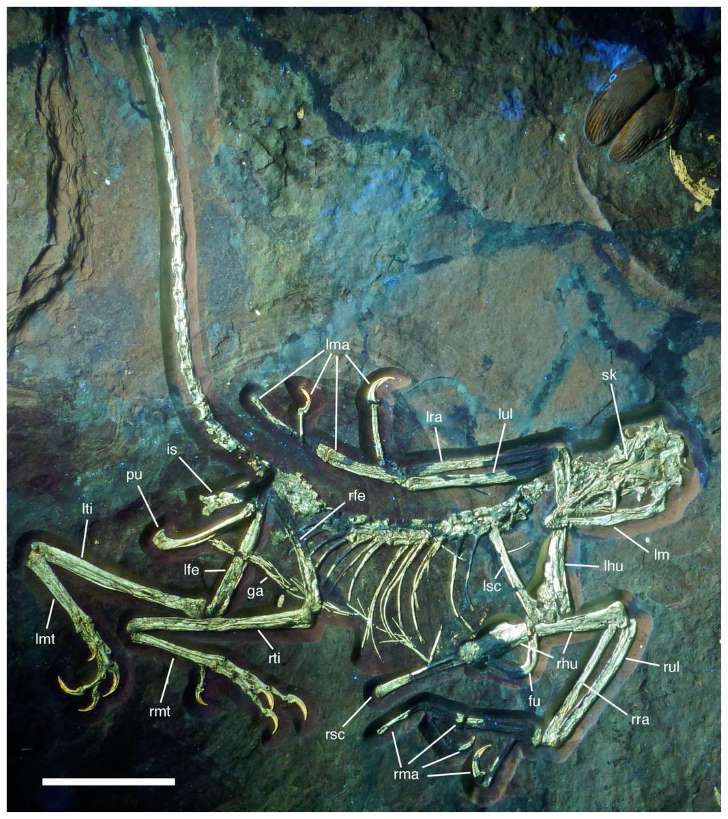A pristine fossil unearthed in Northern Bavaria has now been determined to be the oldest fossil bird ever discovered. The fossil belongs to a type of archaeopteryx, winged animals with dinosaur traits, like sharp teeth and a long tail. The newly discovered fossil reveals that these bird-like dinosaurs lived on several islands—though whether they flew there is still anyone’s guess.
The word “archaeopteryx” means “first wing.” The most famous example of this prehistoric creature, called the Berlin specimen, was so well-preserved that paleontologists could see distinct impressions of large, wide feathers pressed into the earth around it as it died. Archaeopteryx fossils helped scientists understand that the true origin of birds is to be found in theropod dinosaurs, two-legged, sharp-toothed species like Velociraptor.
In a paper published Friday in the journal PeerJ, a team of paleontologists from Ludwig Maximilian University of Munich (LMU) describe the new Northern Bavarian specimen as the eleventh fossil to be, the researchers claim, definitely within the Archaeopteryx genus.
In the summer of 2010, a collector in Schamhaupten, Germany, found the specimen and brought it to a a group of paleontologists and geologists. The sediment that the fossil was found in is likely slightly older than any other archaeopteryx fossil location, based on previous chemical analysis, at more than 150 million years old.

Establishing it firmly as an archaeopteryx was a high-stakes task. In the past, some alleged archaeopteryx fossils have turned out to be too physically different to be considered true members of the genus. In December, this happened with the first “archaeopteryx” ever found: It turned out that the animal was more closely related to anchiornis, a completely different small, feathered dinosaur. The scientists note that, because of this confusion, it’s important to have a robust collection of well-studied archaeopteryx fossils, in order to compare future discoveries to the known specimens.
The newly-described specimen helps scientists understand this important genus even better. For example, we now know that the animals lived over a span of at least a million years, which is longer than we previously knew. Furthermore, by studying the characteristics of this oldest specimen and comparing them to other specimens, paleontologists can understand the variety in the physical appearance of archaeopteryx. Notably, the teeth differed significantly between some of the different members of the genus.
“The high degree of variation in the teeth is particularly striking,” Oliver Rauhut, a professor in the Department of Earth and Environmental Sciences at LMU and study co-author, said in a press release. The arrangement of the teeth is different for each specimen, Rauhut explained.
He theorizes that this diversity could be due to differences in their diets. Like the finches in the Galapagos Islands, Rauhut explained, the different animals from across the genus had evolved different mouths.
Archaeopteryx, with it’s dinosaur claws, teeth and tail, and its well-developed bird feathers, represents an iconic turning point in evolution. Because this animal that has some characteristics of theropod dinosaurs, and some of modern birds, it’s the perfect example of a transitional fossil between the two groups of animals.












